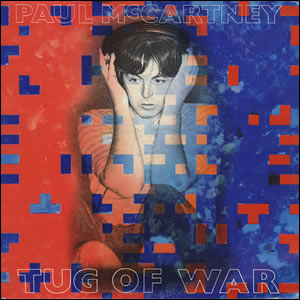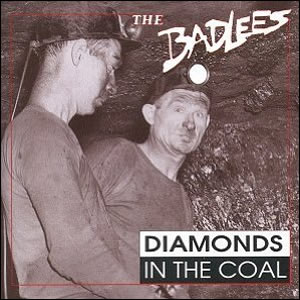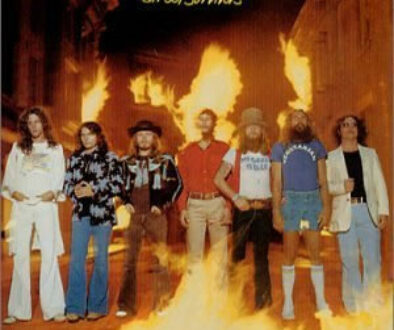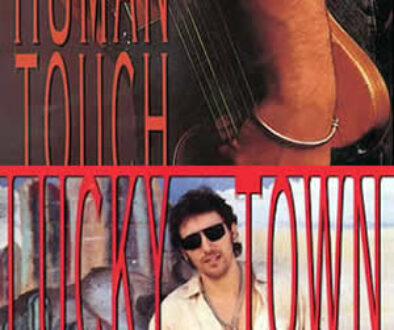Tug Of War by Paul McCartney
 The naive belief that one could end war by political correctness at a time when no major wars were occurring in the Western world may be the best way to describe the underlying theme of Tug Of War, the 1982 album by Paul McCartney. It comes in the wake of many events including the death of John Lennon and the dissolution of McCartney’s post-Beatles group, Wings. In fact, the earliest sessions for Tug Of War (in late 1980) were actually intended for the final Wings album. But following Lennon’s assassination, recording was suspended and that album was never completed. Lacking direction, McCartney called in Beatles producer George Martin to work on his material for the first time since the “Fab Four” broke up.
The naive belief that one could end war by political correctness at a time when no major wars were occurring in the Western world may be the best way to describe the underlying theme of Tug Of War, the 1982 album by Paul McCartney. It comes in the wake of many events including the death of John Lennon and the dissolution of McCartney’s post-Beatles group, Wings. In fact, the earliest sessions for Tug Of War (in late 1980) were actually intended for the final Wings album. But following Lennon’s assassination, recording was suspended and that album was never completed. Lacking direction, McCartney called in Beatles producer George Martin to work on his material for the first time since the “Fab Four” broke up.
Reuniting with Martin guaranteed that the album would receive much attention. Much of the production is rich and rewarding, as one would expect from a George Martin production. However, the creative muse from McCartney seems contrived at times. Aside from the songs with his ex-Wings band mates, there are two collaborations with Stevie Wonder, one with Carl Perkins, and one with fellow Beatle, Ringo Starr.
As a whole, the album is almost interesting musically but not cohesive in the slightest. In total, there is about half of a great album here of well-produced and melodic songs. This shows that there was great potential in this reunion of McCartney and Martin. But then there’s the rest of the album which sounds like it should have been reserved for some kind of celebrity collection.
 Tug Of War by Paul McCartney |
|
|---|---|
| Released: April 26, 1982 (EMI) Produced by: George Martin Recorded: AIR Studios, London, 1981 |
|
| Side One | Side Two |
| Tug Of War Take It Away Somebody Who Cares What’s That You’re Doing? Here Today |
Ballroom Dancing The Pound Is Sinking Wanderlust Get It Be What You See (Link) Dress Me Up As a Robber Ebony and Ivory |
| Primary Musicians | |
| Paul McCartney – Lead Vocals, Bass, Keyboards Eric Stewart – Guitars, Vocals Denny Laine – Guitars George Martin – Piano Stevie Wonder – Keyboards, Vocals Steve Gadd – Drums |
|
In March 1982, McCartney’s duet with Stevie Wonder, “Ebony and Ivory”, was released to broad acclaim. It reached #1 in many countries and consequently, Tug Of War immediately hit #1 on the album charts when it was released in April. The song uses the allegory of the ebony (black) and ivory (white) keys on a piano to make a statement on racial harmony, in a quite simplistic and tacky way. Still, it was a very popular song and the second most popular of McCartney’s entire career behind the Beatles’ “Hey Jude”. The other collaboration with Wonder is “What’s That You’re Doing?”, a song that is quite off-putting because of the cheap electronics brought to the forefront. For the amount of talent between these two geniuses, this is really a low quality, throwaway track, extended way too long in length with sounds generated as if a couple of teenagers got a hold of a synthesizer.
“Here Today” was written as a bittersweet folk melody in memoriam of John Lennon with a string arrangement by Martin. But these fall short of magic and even the song written in tribute to Lennon seemed fluffy and lacking true substance, as if McCartney wrote the song he thought people wanted him to write rather than something deep and REAL. Some have compared the opening title song, “Tug of War” to Lennon’s “Imagine”, but that is a bit generous. It is a fine enough song, with good melody and interesting changes, but it is far from a classic.
“Take It Away” may be the last great Wings song, and it is certainly the best song on the album. It contains elements that harken back to greats like “Listen to What the Man Said”, with sonic supremacy, excellent vocal choruses, and just the right brass added at just the right time. The song starts as reggae but morphs into something for show-style. If the rest of the album was of this quality, it would have been a great album
The second side opens with a few fine tracks, starting with the fun “Ballroom Dancing”, which is well-produced with great sonic flavorings throughout. “The Pound Is Sinking” is a good acoustic song with a country and western type rhythm edged with a elements of doomy-ness and theatrics reminiscent to early Genesis. “Wanderlust” is a great piano song with good production and excellent vocals. It nods towards McCartney’s 1979 marijuana bust in Japan without getting too specific.
“Get It” is a duet with Carl Perkins, that is not totally unpleasant, but out of place here among some of the finer compositions. A weird “link” called “Be What You See” leads to “Dress Me Up As a Robber”, a funked-up disco with high-pitched vocals, which again calls into question some of the selections on this album (he should let Earth, Wind, and Fire be Earth, Wind, and Fire) The only really interesting part is the lead, Spanish-style acoustic.
In the end, Tug Of War would end up being the crossroads between McCartney’s fine albums of the seventies and the rather forgettable albums of the eighties.
~
Part of Classic Rock Review’s celebration of 1982 albums.





February 9, 2015 @ 8:22 am
I largely agree with the underlying points of this review. By the way, ‘Wanderlust’ (which for me is easily the best song on this very listenable, if slightly calculated and over-syrupy album) is named after Paul’s ship of the same name. And the marijuana bust occurred in Toyko (where I live) in 1980, not 1979.
November 28, 2015 @ 8:58 am
Couldn’t disagree more with this reviewer. Like every track and many like Take It Away, Someone Who Cares, Here Today, Ballroom Dancing, Wanderlust, Pound is Sinking and the title track are on a level of PM’s best with the Beatles. Tug of War is right up there with Band on the Run, Ram, Flaming Pie, Chaos, Memory Almost Full, Venus and Mars, and Flowers in the Dirt. Macca’s post Beatles career is grossly underrated.
January 17, 2016 @ 7:28 am
This is a terrible review because you can tell from the 1st 2 paragraphs that the author has an agenda and is anti-Paul. End result is not an objective review. Just listen to the melodies, the singing, the lyrics etc and you have one of the best Post Beatles’ albums from any of the 4. To get an objective review, just go to Amazon’s customer reviews where you have objective music lovers. Almost 90% of a huge poll had Tug of War at either 4 or 5* out of 5. 68% had Tug at 5 stars. There is where you get the real answer of the quality of an album.
November 16, 2017 @ 8:12 am
I agree with you, BJ. Seems some reviewers just have something against McCartney – maybe because his records sold in their millions they felt the need to take him down a notch? Anyway, this is an excellent album with a very moving tribute to John Lennon and some wonderful songs and production. Don’t let a muppet reviewer put you off!
April 27, 2020 @ 6:47 pm
This review is overly critical and trying too hard to be clever. I have never heard anyone shoot down Here Today. Definitely an agenda…..This is arguably Paul’s best album even better than BOTR. It’s just my opinion.?
July 7, 2021 @ 1:09 pm
Paul’s solo career can be wildly up and down, that’s just part of the Paul package, a good album if followed by a bad one and there are plenty of “self indulgent” fluff songs scattered about. But Tug of War is one of the good ones. However, this is Paul M. so along with one of his most consistent writing efforts, he also includes “Ebony and Ivory”, a trite, treacly ode to racial harmony that is regularly, and justifiably, derided as one of the worst hit songs in history by a major artist. Once you get past that, it is a terrific album. It does have a bit of a potpourri feel that the reviewer here seems to think is a negative but the stylistic departures (funk, dance hall boogie, rockabilly) make for an interesting variety usually not present on a Paul album. Plus, the songs are all actually quite good. Let’s put it this way, if “What’s that you’re Doing” appeared on a Stevie album would the reviewer be putting it down? I don’t think so, it’s catchy, funky and fun. The collaboration with Carl may seem like a throwaway but it’s a heartwarming and catchy one, not a bad supporting track at all. Take it Away is one of Paul’s best post classic period hits, though a minor one, with a breezy effortless melody that deserved more radio airplay than Ebony and Ivory did. Maybe there is a bit of artifice here but when Paul’s melodic sense is on, most criticisms are just quibbles, then his albums are always great effervescent pop music.